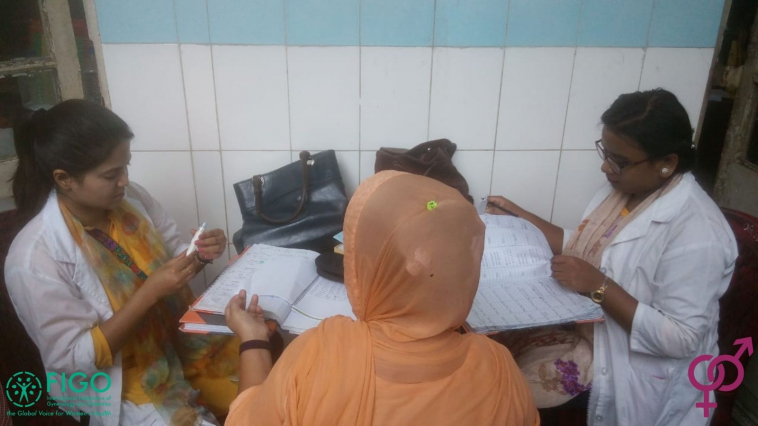PPIUD and Anaemia Research: Updates from Bangladesh

In Bangladesh, prevalence of anaemia among women of reproductive age has been reported as 39%, presenting a major public health issue (Bangladesh National Anaemia Profile, 2017). Some previous studies have shown that IUD users may experience heavier and longer menstruations and so face an increased risk of iron deficiency, however, research in this area is limited and no studies have previously been published on the risk of anaemia in postpartum IUD users.
To further the evidence base, over the last 18 months FIGO and OGSB have been conducting some research to determine the impact of PPIUD insertion on anaemia levels across their 5 sites.
The research has recruited 3,648 participants and has followed women up at 6 weeks, 6 months and 9 months to collect data on contraceptive use, breast-feeding practices, and iron supplementation, as well as general well-being. The primary outcome of interest was haemoglobin levels.
As with most activities, data collection came to a halt on 22nd March due to the outbreak of COVID-19, at which point insufficient follow-up rates had been achieved to conduct robust statistical analysis.
We are pleased, however, to announce that the Bangladesh Medical Research Council has since approved a revision to the study design and extension, allowing us to recommence data collection through home visits. This extension will enable us to follow up women at 12 months postpartum, which is a clinically more relevant time point due to the increased time-period from discontinuing breast-feeding and return of menstruation.
Initial scoping began at the end of July and more than 200 women consented to receive a home visit for the research. Our teams have now re-deployed at all sites and data collection is well underway.
Despite the challenges of the delay presented by COVID-19, we are excited to be able to complete this important work, the results of which will help determine whether PPIUD is a safe method for women at risk of anaemia.
Keep an eye on FIGO channels for the results of this research, which are anticipated by the end of this year.